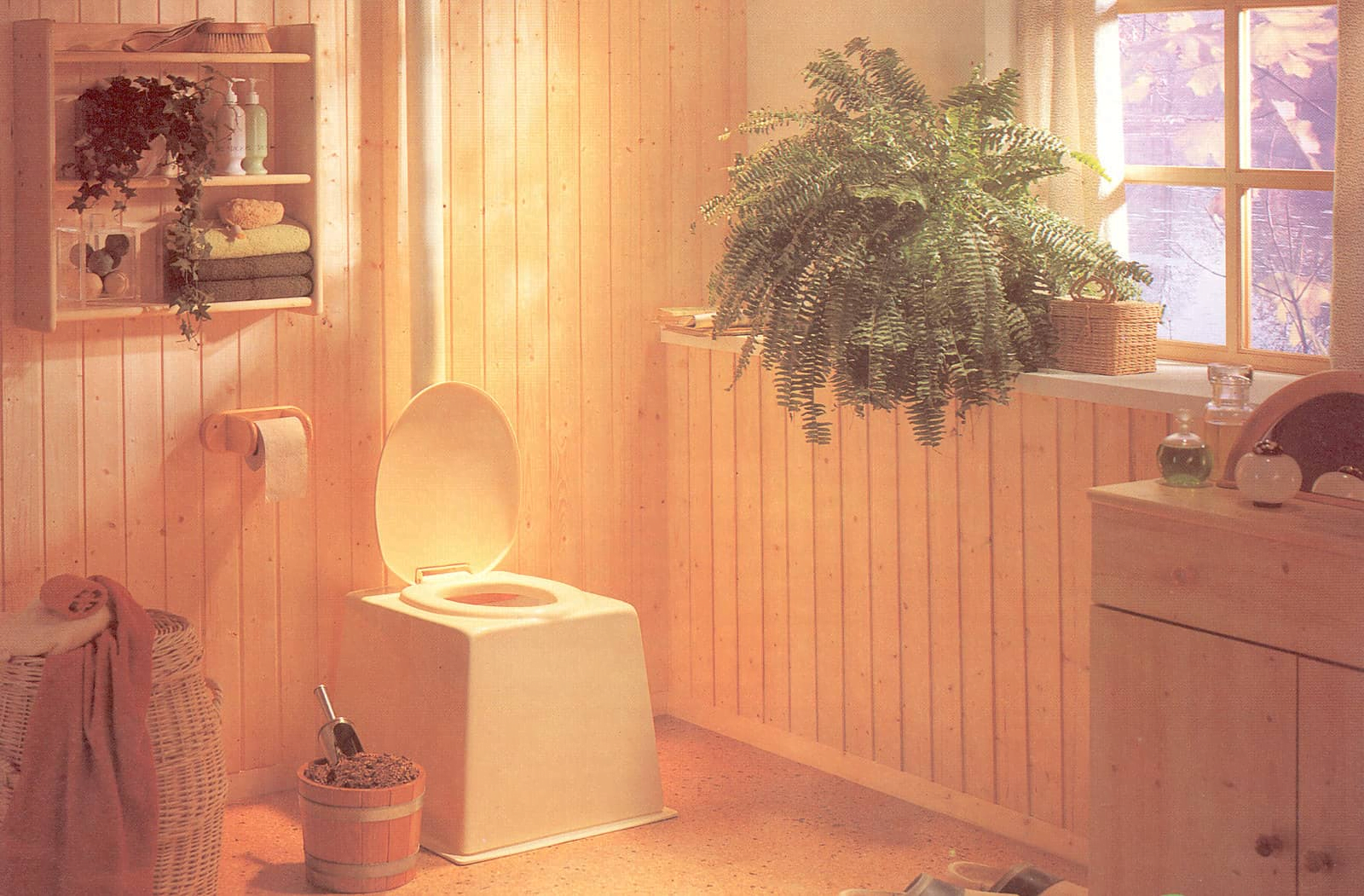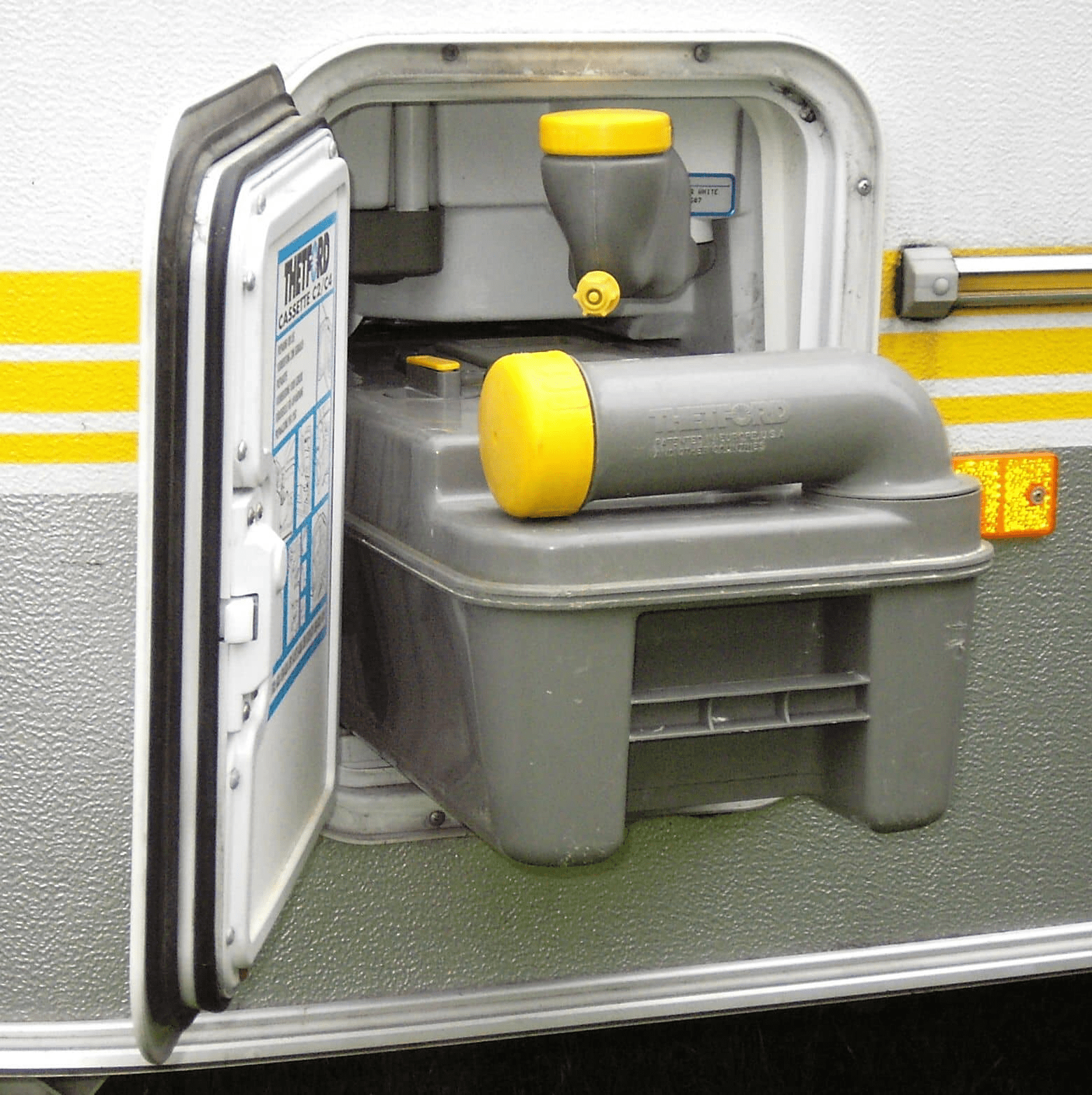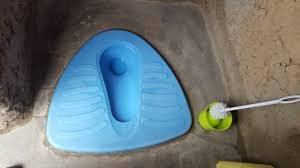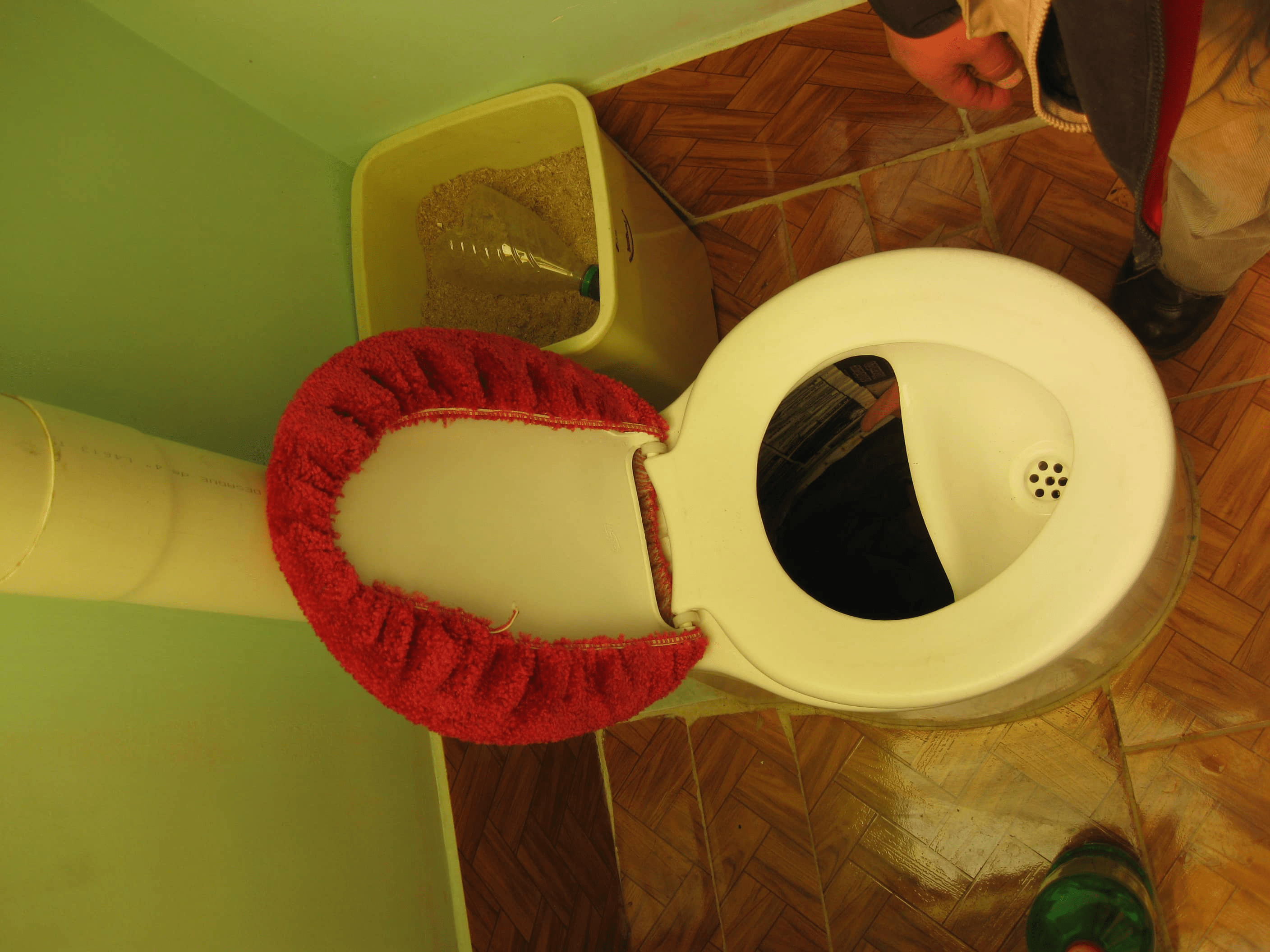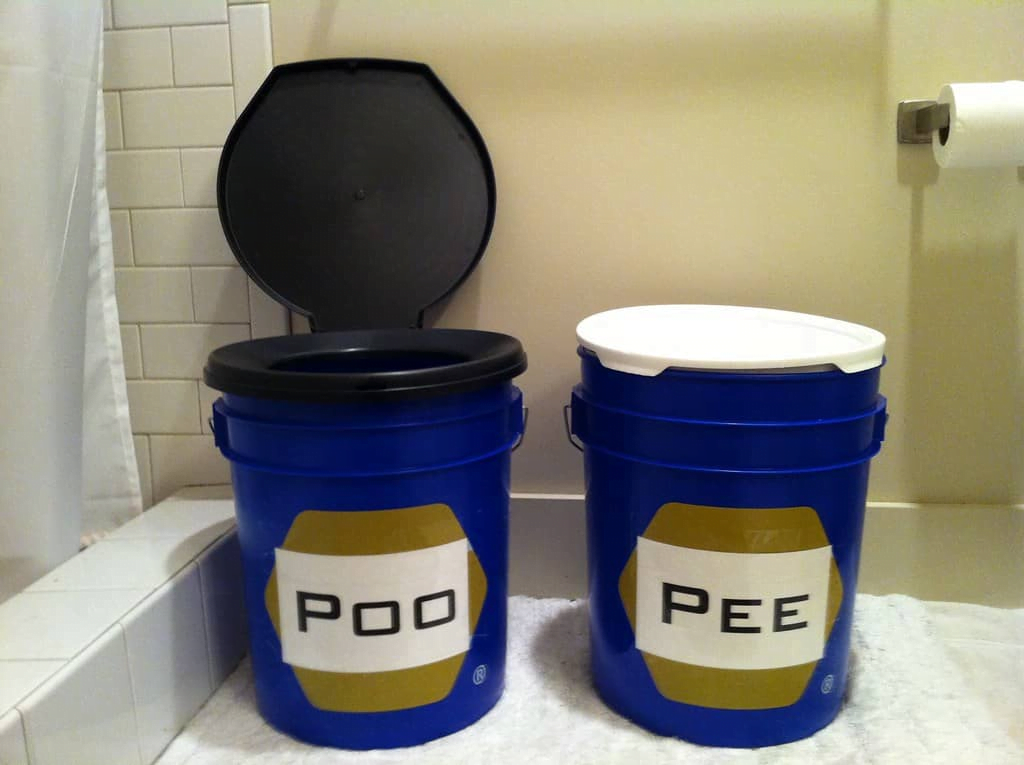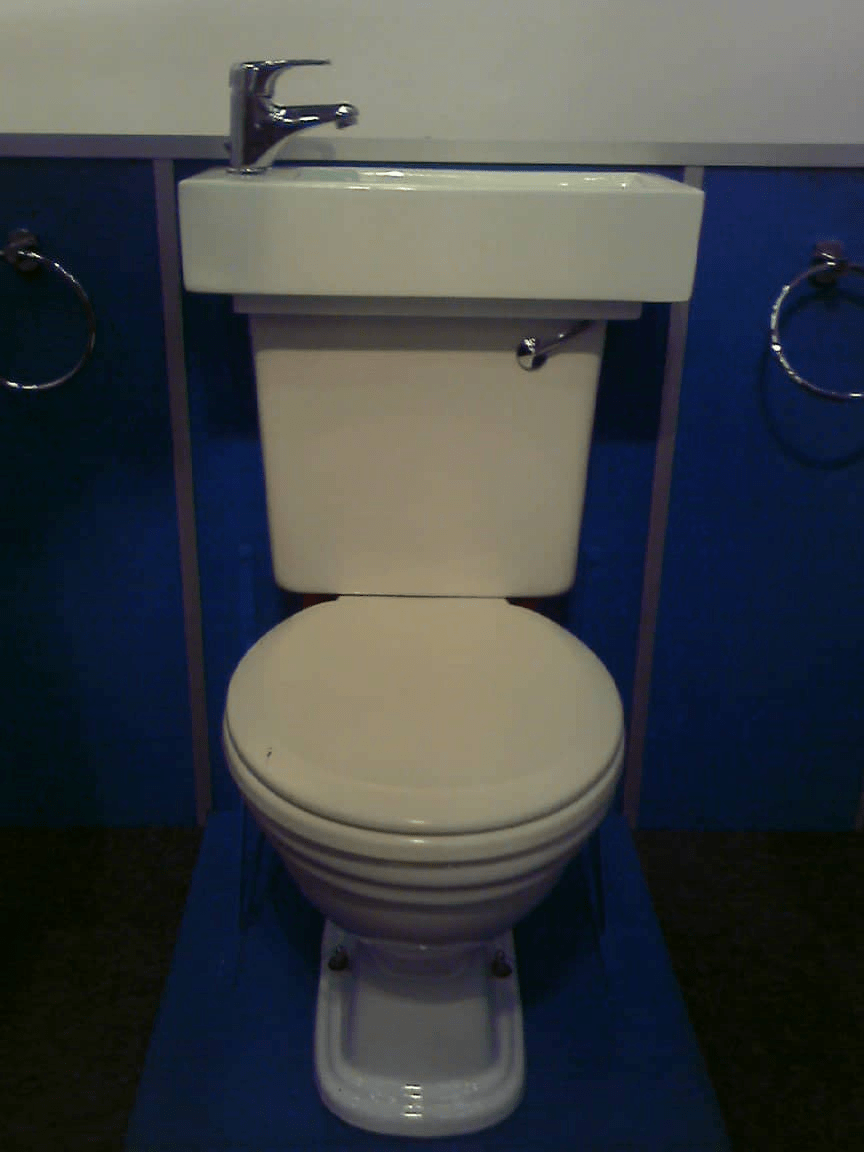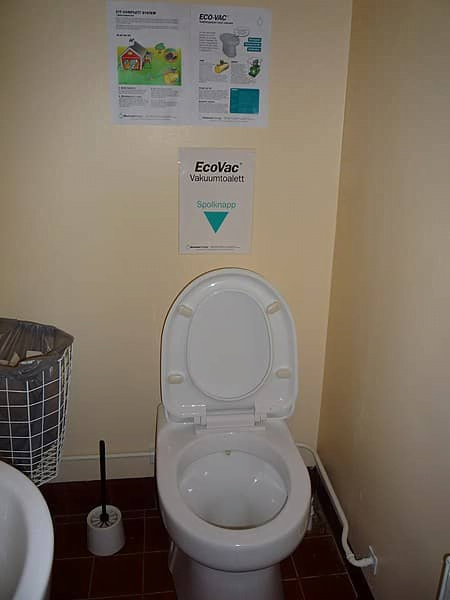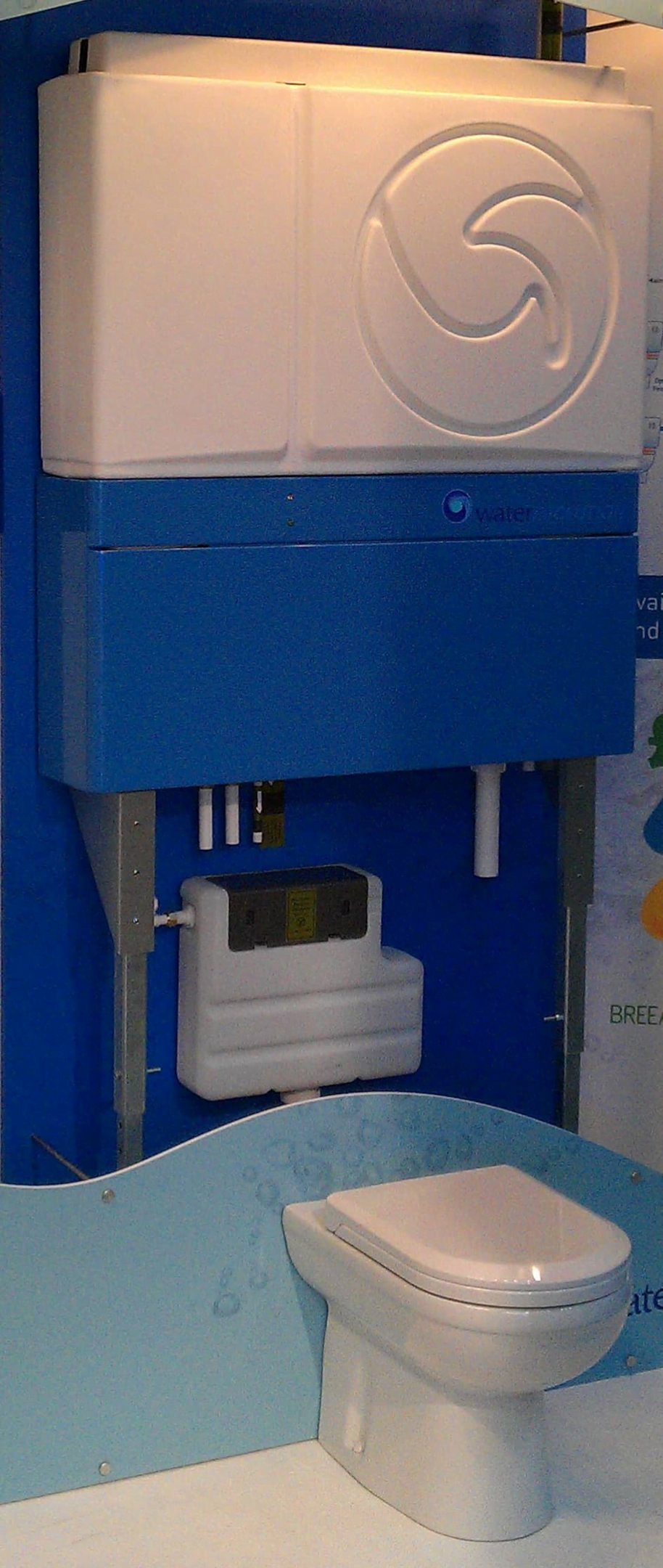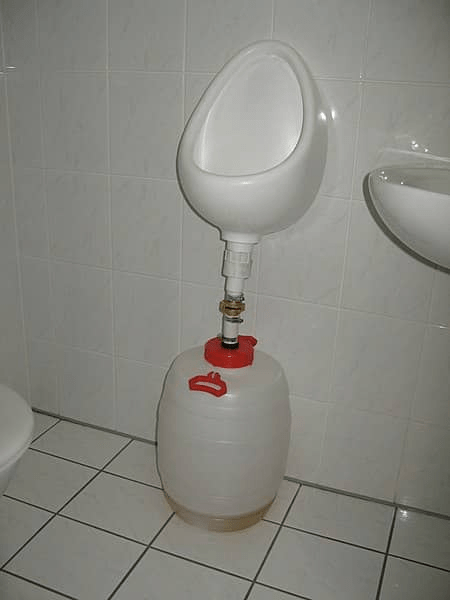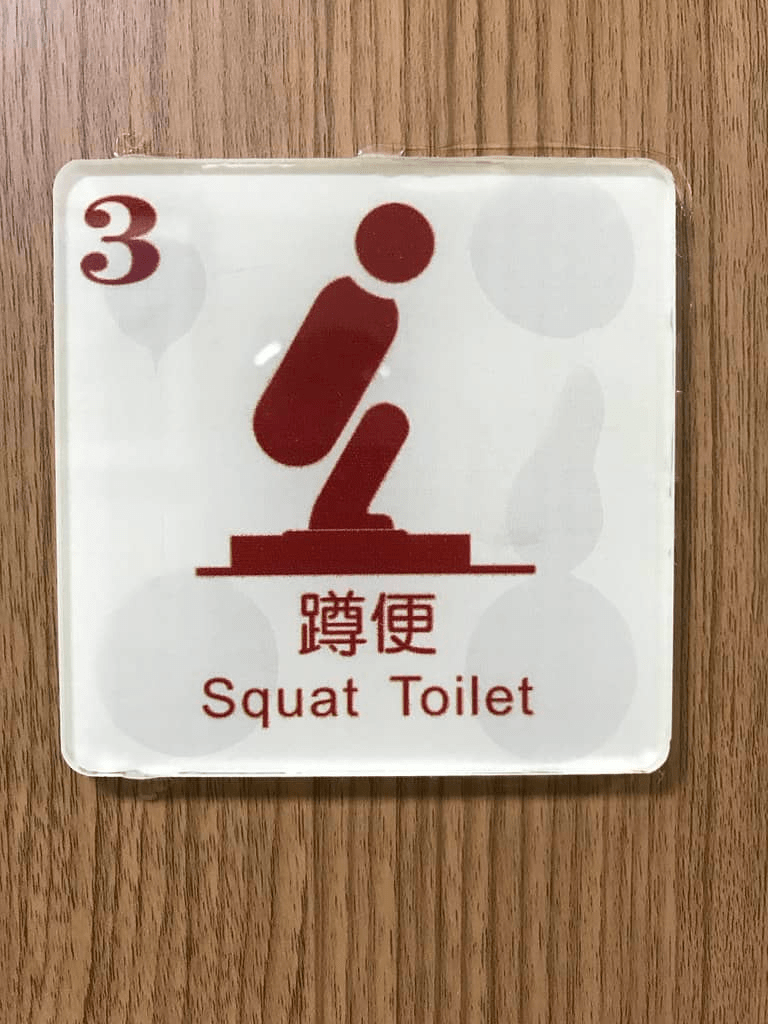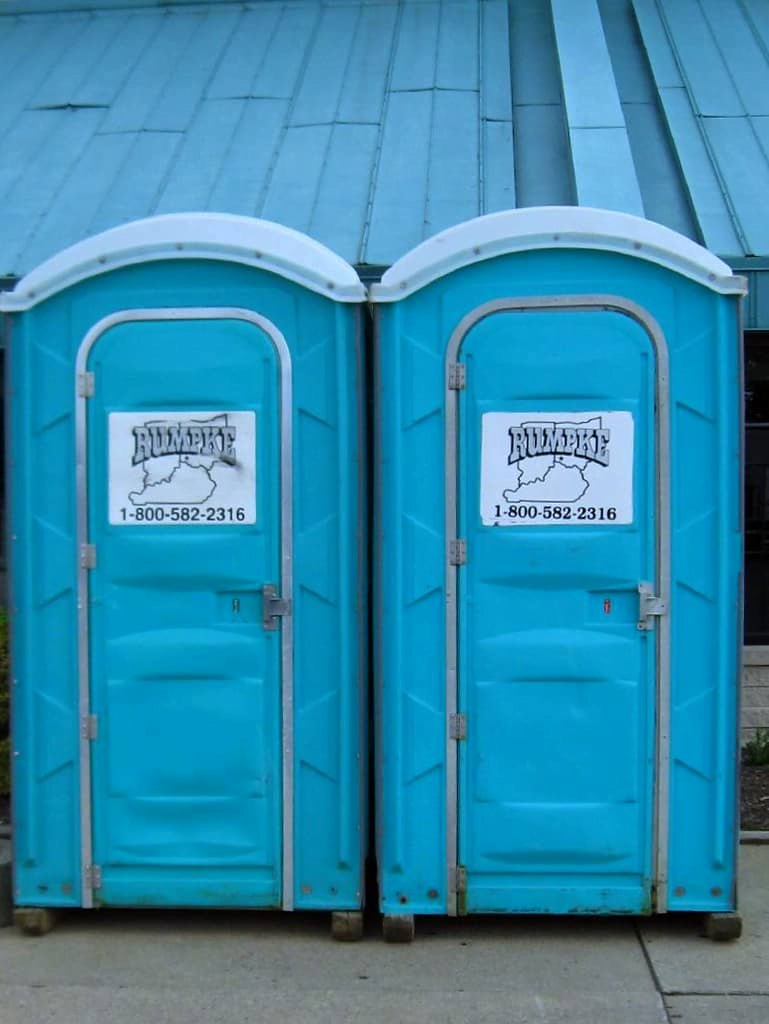19 Practical Off Grid Toilet Ideas for Sustainable Living
Living off the grid kind of goes hand in hand with leading a self sustainable lifestyle, and one of the big necessities of this is managing bathroom facilities without relying on your normal flush and be gone centralized sewer luxuries. Whether you’re planning to go off-grid for environmental reasons, cost savings, or personal preference, building an off grid toilet system is a must for getting rid of human waste. Thankfully there are a number of off grid toilet solutions and ideas you can test out, this guide explores 19 innovative off the grid bathroom solutions that cater to various needs and preferences.
1. Compost Toilet
Compost toilets are one of the most popular off-grid solutions. They use a dry composting method to turn waste into compost, which can be used to enrich soil.
Benefits
Waterless: No water is required, making it ideal for water-scarce areas.
Sustainable: Converts waste into valuable compost.
Low Maintenance: Requires periodic removal of compost but is otherwise low maintenance.
How It Works
Compost toilets separate liquid and solid waste. The solids (including toilet paper) decompose through aerobic bacteria, aided by materials like sawdust or coconut coir. Over time, the waste turns into compost, which can be safely used in gardens.
Considerations
Ventilation: Proper ventilation is crucial to manage odors.
Space: Requires space for the composting chamber.
Initial Setup: May require an upfront investment in a quality unit.
2. Cassette Toilet
Cassette toilets are portable and easy to use. They consist of a toilet bowl and a detachable waste tank, making them a flexible solution for off-grid living.
Benefits
Portability: Easy to transport and set up.
Convenience: Simple to empty and clean.
Compact: Takes up minimal space, ideal for small off-grid setups.
How It Works
Waste is collected in a detachable tank that can be easily removed and emptied at designated dumping sites. Some models come with flushing mechanisms that use minimal water.
Considerations
Capacity: Regular emptying is necessary due to limited tank size.
Disposal: Requires access to proper waste disposal facilities.
3. Incinerating Toilet
Incinerating toilets burn waste to ash using electricity or gas, making them a clean and efficient off-grid bathroom solution, and are popular with models like the Norwegian Cinderella incineration toilet system dominating the market and over all being a very impressive option.
Benefits
Sanitary: Reduces waste to sterile ash.
Minimal Maintenance: Requires periodic removal of ash.
No Water Needed: Operates without water.
How It Works
Waste is deposited into a combustion chamber, where it is incinerated at high temperatures. The resulting ash is minimal and easy to dispose of.
Considerations
Energy Source: Requires a reliable energy source, either electricity or gas.
Initial Cost: Higher upfront investment compared to other options.
4. Pit Latrine
A pit latrine is a simple and traditional off-grid bathroom solution, consisting of a hole in the ground covered by a basic shelter.
Benefits
Low Cost: Inexpensive to construct.
Simple: Easy to build and maintain.
No Water Required: Completely waterless.
How It Works
Waste is deposited into a pit, where it decomposes naturally. The pit is covered with a slab and a shelter to provide privacy and protection.
Considerations
Odor Management: Proper covering and ventilation are essential to control odors.
Location: Needs to be located away from water sources to prevent contamination.
5. Vault Toilet
Similar to a pit latrine, a vault toilet uses a sealed container for waste, which is periodically emptied.
Benefits
Sanitary: Sealed container prevents waste from contaminating the ground.
Waterless: Operates without water.
Durable: Suitable for long-term use.
How It Works
Waste is collected in a sealed vault or tank. When full, the vault is emptied by a service provider or manually if you have the equipment.
Considerations
Service Requirements: Needs regular emptying by a service provider or suitable equipment for DIY emptying.
Construction: Requires a durable structure to house the toilet and vault.
6. Bucket Toilet
Bucket toilets are a basic and cost-effective off grid toilet solution. It consists of a bucket, a seat, and a lid, often used with sawdust or other cover materials to manage odor.
Benefits
Inexpensive: Very low cost to set up.
Simple: Easy to use and maintain.
Portable: Can be moved as needed.
How It Works
Waste is collected in a bucket. After each use, a layer of cover material (like sawdust or peat moss) is added to manage odor and aid decomposition. The bucket is emptied into a composting area when full.
Considerations
Capacity: Needs frequent emptying due to limited size.
Odor Management: Requires effective use of cover material to control odors.
7. Solar-Powered Toilet

Solar-powered toilets use solar energy to power ventilation and waste processing systems, making them an eco-friendly off-grid bathroom solution.
Benefits
Eco-Friendly: Uses renewable energy.
Odor Control: Ventilation systems reduce odors.
Low Operating Costs: Solar power reduces ongoing costs.
How It Works
Solar panels power fans and other systems that ventilate and process waste. Some models use solar heat to accelerate waste decomposition.
Considerations
Sunlight Dependence: Requires adequate sunlight to function efficiently.
Initial Investment: Higher initial cost for solar set up and equipment.
8. Biogas Toilet
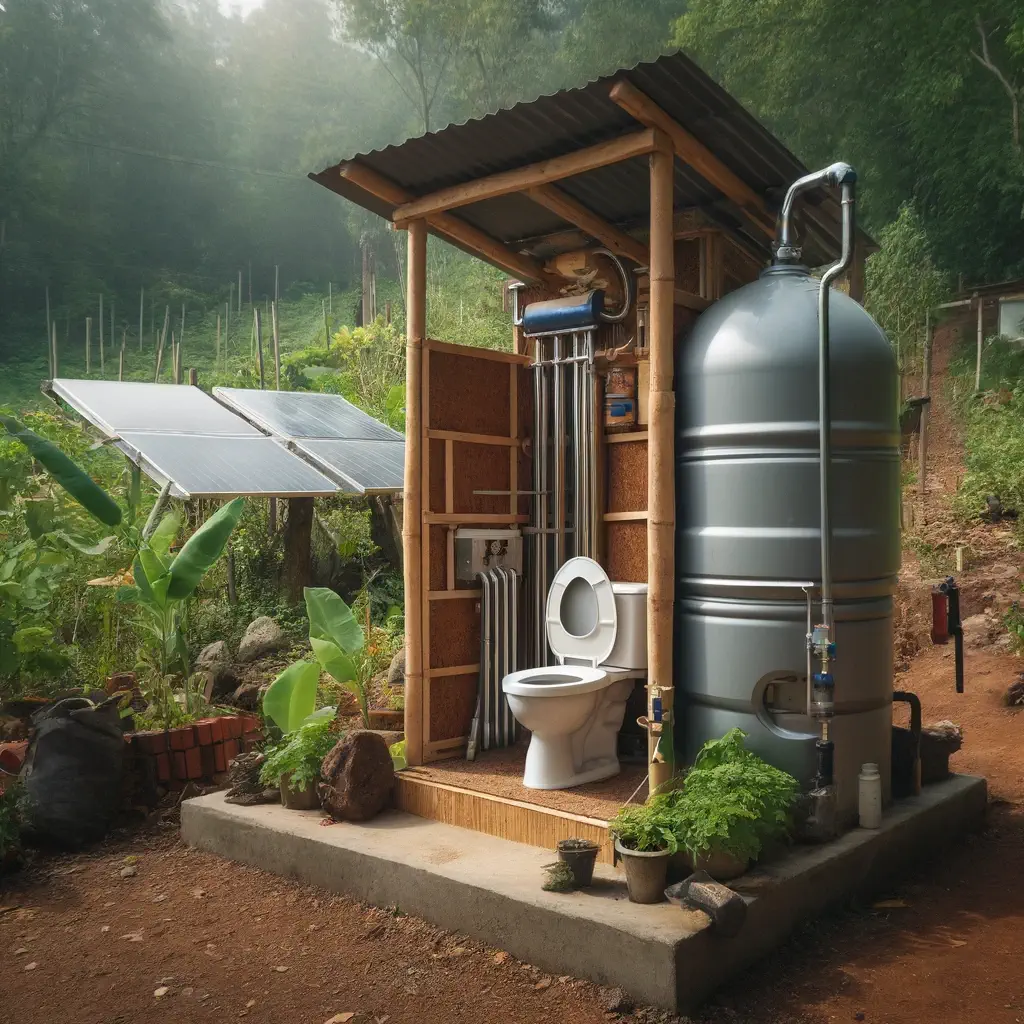
Biogas toilets convert human waste into biogas, which can be used for cooking or heating, through anaerobic digestion. Although a bit bigger than other solutions, its ability to produce energy as both compost and as gas makes it one of the most impressive off grid toilets on the list.
Benefits
Energy Production: Generates biogas, a valuable energy source.
Sustainable: Reduces waste and produces renewable energy.
Water Efficient: Requires minimal water.
How It Works
Waste is collected in a sealed digester, where anaerobic bacteria break it down, producing biogas. The biogas is collected and used for energy, while the remaining sludge can be composted.
Considerations
Maintenance: Requires regular maintenance to ensure proper functioning.
Space: Needs space for the digester and gas storage.
9. Greywater System
Greywater systems reuse water from sinks and showers for toilet flushing, conserving water and reducing waste. Although a normal toilet is needed, such a system is still giving back and a great first step towards an off grid lifestyle.
Benefits
Water Conservation: Reduces fresh water usage.
Sustainable: Recycles household water.
Cost-Effective: Lowers water bills.
How It Works
Greywater is collected from household drains, filtered, and stored. It is then used to flush toilets or irrigate gardens.
Considerations
Filtration: Requires proper filtration to prevent clogging and odors.
Plumbing: Needs additional plumbing for greywater collection and distribution.
10. Portable Camping Toilet
Portable camping toilets are lightweight, portable and a great small off grid toilet, often used with chemical treatments to manage waste and odor.
Benefits
Portability: Easy to transport and set up.
Convenience: Simple to use and maintain.
Compact: Ideal for temporary or small-scale off-grid setups.
How It Works
Waste is collected in a portable unit and treated with chemicals to reduce odors and break down solids. The unit is emptied at designated disposal sites.
Considerations
Chemical Use: Requires regular purchase of chemical treatments.
Disposal: Needs access to proper waste disposal facilities.
11. Dry Flush Toilet
Dry flush toilets use a vacuum-sealing system to wrap and store waste in odor-proof bags, making them a clean and efficient off-grid solution.
Benefits
Odor Control: Vacuum-sealing eliminates odors.
Sanitary: Waste is contained in sealed bags.
Waterless: Requires no water.
How It Works
After use, waste is wrapped in a double-layer bag and sealed with a vacuum. The sealed bag is stored in a cartridge that is periodically replaced.
Considerations
Cartridge Replacement: Requires regular replacement of cartridges.
Cost: Higher ongoing costs for replacement bags and cartridges.
12. Cedar Box Toilet
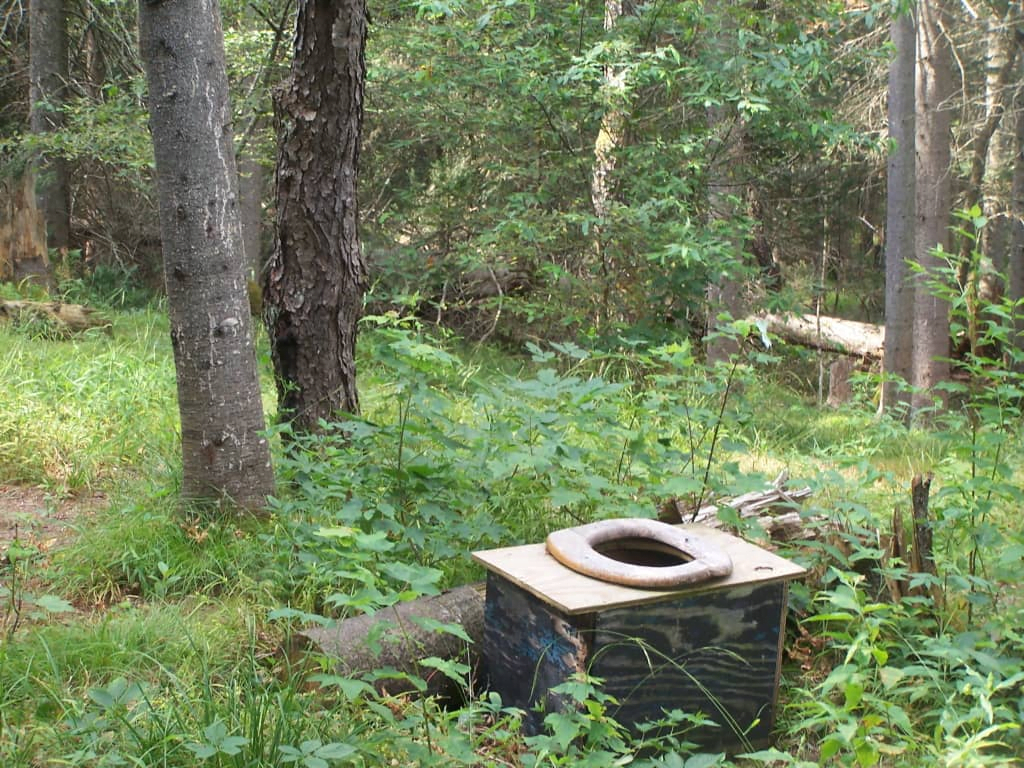
A cedar box toilet is a DIY compost toilet housed in a cedar box, which is resistant to odor and moisture, making it a practical and aesthetically pleasing off-grid solution.
Benefits
DIY-Friendly: Can be built at home with basic carpentry skills.
Aesthetic: Cedarwood provides a natural, attractive appearance.
Odor Resistance: Cedar is naturally resistant to odors and moisture.
How It Works
Waste is collected in a bucket or container within the cedar box. Cover materials like sawdust or leaves are added after each use to aid decomposition and control odors. The waste is periodically emptied into a composting area.
Considerations
Construction Skills: Requires basic carpentry skills to build a simple wooden structure.
Space: Needs space for the composting bucket or container.
Maintenance: Periodic emptying and addition of cover materials.
13. Urine-Diverting Dry Toilet (UDDT)
Urine-diverting dry toilets (UDDTs) separate urine from feces to facilitate composting and reduce odor, making them an efficient off-grid solution.
Benefits
Odor Reduction: Separating urine significantly reduces odors.
Efficient Composting: Easier to compost solid waste without urine.
Waterless: Does not require water.
How It Works
The toilet has two compartments: one for urine and one for feces. Urine is diverted to a separate container, while feces are collected and covered with dry material to aid composting.
Considerations
Separation: Requires proper design to effectively separate urine from feces.
Urine Disposal: Needs a method to handle or use collected urine.
14. Eco-Friendly Flush Toilet
Eco-friendly flush toilets use minimal water and are often connected to a greywater recycling system, making them a sustainable off-grid option.
Benefits
Water Conservation: Uses significantly less water than traditional flush toilets.
Sustainable: Can be integrated with greywater systems.
Convenience: Familiar flushing mechanism.
How It Works
These toilets use a dual-flush system or low-flow technology to minimize water use. Greywater from sinks and showers can be used for flushing.
Considerations
Plumbing: Requires additional plumbing for greywater integration.
Maintenance: Regular maintenance to ensure efficient water use.
15. Portable Urinal
A portable urinal is a simple container designed for urine collection, often used alongside other toilet systems to reduce the load on composting toilets.
Benefits
Simple: Easy to use and clean.
Portable: Can be used anywhere.
Reduces Load: Helps reduce the load on composting toilets.
How It Works
Urine is collected in a portable container, which is then emptied into a larger storage tank or directly onto a designated area for disposal or use as fertilizer.
Considerations
Capacity: Needs frequent emptying due to limited size.
Odor Management: Requires proper handling to prevent odors.
16. Japanese-Style Squat Toilet
A Japanese-style squat toilet can be designed to be waterless, making it a practical off-grid solution that is a great semi permanent/permanent fixture that’s easy to install off grid..
Benefits
Waterless: Does not require water.
Hygienic: Promotes a natural position for elimination.
Simple: Easy to construct and maintain.
How It Works
The toilet consists of a squatting platform over a pit or container. Waste is collected in the pit or container and can be composted or disposed of as needed.
Considerations
Comfort: May require adjustment for those not used to squatting toilets.
Odor Management: Needs proper covering and ventilation to manage odors.
17. Separation Toilet

Separation toilets separate solid and liquid waste, making it easier to manage waste and produce compost, making them a great off-grid toilet option.
Benefits
Odor Reduction: Separating liquids and solids reduces odors.
Efficient Composting: Simplifies the composting process.
Waterless: Does not require water.
How It Works
The toilet has compartments for separating urine and feces. Urine is diverted to a container, while feces are collected in a composting chamber and covered with dry material.
Considerations
Separation Mechanism: Requires effective design to separate urine and feces.
Urine Disposal: Needs a method to handle or use collected urine.
18. Travel Trailer Toilet
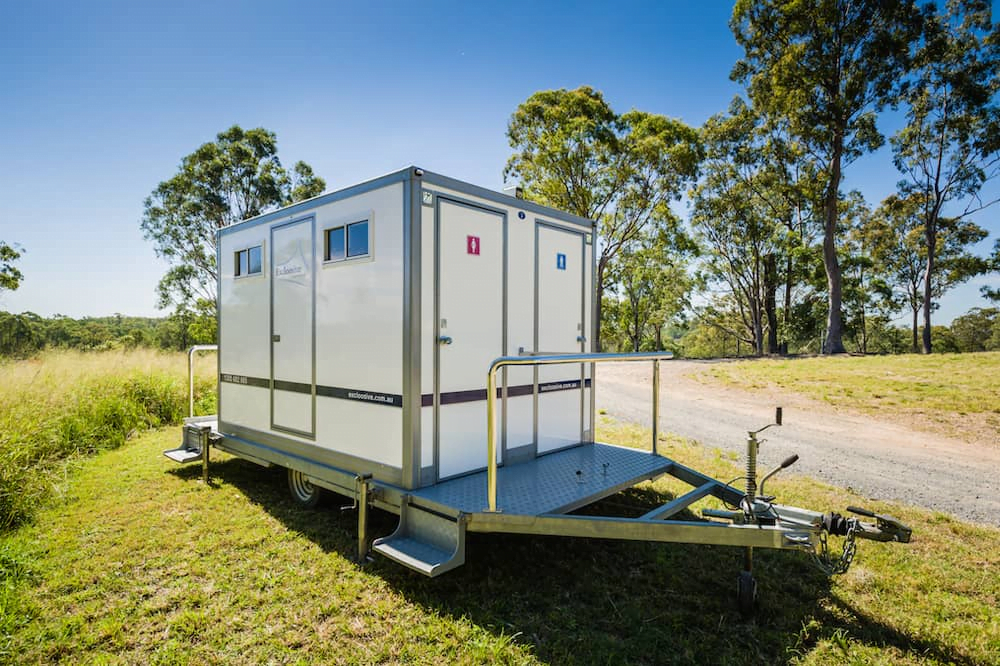
Travel trailer toilets are integrated into RVs and are connected to a black water tank, making them a convenient off-grid solution for mobile living.
Benefits
Convenience: Integrated into the living space.
Portable: Ideal for mobile off-grid living.
Familiar Mechanism: Uses a flushing mechanism similar to traditional toilets.
How It Works
Waste is collected in a black water tank, which is periodically emptied at designated dumping stations. Some models use minimal water for flushing.
Considerations
Disposal: Requires access to proper waste disposal facilities.
Maintenance: Regular maintenance of the black water tank and plumbing.
19. Self-Contained Toilet
Self-contained toilets are portable units that include their own waste treatment systems, such as chemical toilets, making them an efficient off-grid solution.
Benefits
Portable: Easy to transport and set up.
Self-Contained: Includes a waste treatment system.
Convenient: Simple to use and maintain.
How It Works
Waste is collected in a sealed container and treated with chemicals to break down solids and control odors. The treated waste is periodically emptied.
Considerations
Chemical Use: Requires regular purchase of chemical treatments.
Disposal: Needs access to proper waste disposal facilities.

These 19 off-grid toilets offer a variety of solutions for different needs and preferences. Whether you’re looking for a simple, low-cost DIY option or a smart systems that make running your off grid home, there’s an off-grid bathroom solution to suit your lifestyle. Embracing these options solve a lot of issues when it comes to waste management in the outdoors , minimizing your environmental impact while ensuring convenience and hygiene.
Choosing the right off-grid bathroom solution depends on your specific needs, resources, and lifestyle. Whether you’re going for a composting toilet or a simple greywater system, each option has its own set of benefits, considerations and trade-offs and as you can imagine more eco-friendly toilets usually have a trade-off of more issues with local regulations, unpleasant odors and more often than not being emptied regularly, so it’s important to assess what works best for your situation and knowing that by implementing any of these off-grid bathroom ideas, you can do your bit towards a sustainable future and enjoy the freedom and independence of off-grid living.

